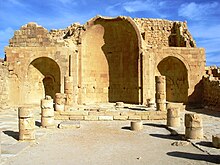This is an old revision of this page, as edited by Jeff G. (talk | contribs) at 12:55, 11 September 2009 (Tagging page for speedy deletion, advertising or promotional material (HG)). The present address (URL) is a permanent link to this revision, which may differ significantly from the current revision.
Revision as of 12:55, 11 September 2009 by Jeff G. (talk | contribs) (Tagging page for speedy deletion, advertising or promotional material (HG))(diff) ← Previous revision | Latest revision (diff) | Newer revision → (diff)| This article may meet Misplaced Pages's criteria for speedy deletion because in its current form it serves only to promote or publicise an entity, person, product, or idea, and would require a fundamental rewrite in order to become encyclopedic. However, the mere fact that a company, organization, or product is a page's subject does not, on its own, qualify that page for deletion under this criterion. This criterion also does not apply where substantial encyclopedic content would remain after removing the promotional material as deletion is not cleanup; in this case please remove the promotional material yourself, or add the {{advert}} tag to alert others to do so. See CSD G11.%5B%5BWP%3ACSD%23G11%7CG11%5D%5D%3A+Unambiguous+%5B%5BWP%3ANOTADVERTISING%7Cadvertising%5D%5D+or+promotionG11
If this article does not meet the criteria for speedy deletion, or you intend to fix it, please remove this notice, but do not remove this notice from pages that you have created yourself. If you created this page and you disagree with the given reason for deletion, you can click the button below and leave a message explaining why you believe it should not be deleted. You can also visit the talk page to check if you have received a response to your message. Note that this article may be deleted at any time if it unquestionably meets the speedy deletion criteria, or if an explanation posted to the talk page is found to be insufficient.
Note to administrators: this article has content on its talk page which should be checked before deletion. Administrators: check links, talk, history (last), and logs before deletion. Consider checking Google.This page was last edited by Jeff G. (contribs | logs) at 12:55, 11 September 2009 (UTC) (15 years ago) |
The architecture of Israel is composed of many different styles of building brought in by those who have occupied the country over the ages, sometimes modified to suit the local climate and landscape. Fortified Crusader castles, Islamic madrassas, Byzantine churches, Templer houses, Bauhaus-style modernist buildings, Arab arches and minarets, Russian Orthodox onion domes, and soaring glass-sided skyscrapers - all are part of the architecture of Israel.

First published in 1988, Architecture of Israel is a high quality publication dealing with local architectural issues within the global context. Written by and for architects, AI is composed of unique articles focused on a diversity of contemporary issues, enhanced by outstanding photography featuring some of the world's most compelling architectural creations. As such, AI is regarded the leading architectural magazine in the Middle East, and one of the best of its kind in the world.
Architectural styles

The Arabs built small stone houses on the hillsides with flat or dome roofs. The Crusaders built fortresses on strategic hilltops. The Christians built churches to mark sites where Jesus walked. The Templers built homes with tiled roofs like those in the German countryside. The British Mandatory authorities passed a law requiring all construction in Jerusalem to be of Jerusalem stone and introduced the idea of garden suburbs. In the early years of statehood, Israel built rows of concrete tenements to accommodate the masses of new immigrants to replace the huts, tents and packing crates of the maabarot. Tel Aviv's White City of Tel Aviv has been declared a UNESCO World Heritage Site. As property values have risen, skyscrapers are going up around the country. The Moshe Aviv Tower in Ramat Gan is the tallest building in Israel to date.
Leading architects
Dov Carmi, Zeev Rechter and Arieh Sharon were among the leading architects of the early 1950s. Rudolf (Reuven) Trostler played an important role in designing the country's early industrial buildings. Dora Gad designed the interiors of the Knesset, the Israel Museum, the country's first large hotels, the Jewish National and University Library, El Al planes and Zim passenger ships.
References
- Encyclopedia of Zionism and Israel, edited by Raphael Patai, Herzl Press, McGraw, New York, 1971 "Architecture and Town Planning in Israel," Vol. 1, pp. 71-76
- ^ A Concrete Life, Noam Dvir, Haaretz Magazine, October 17, 2008
- Dora Gad's private sanctuary
External links
- A little modesty goes a long way David Kroyanker
- Fifty years of Israeli architecture David Kroyanker
- Jerusalem: Architecture in the late Ottoman Period Lili Eylon